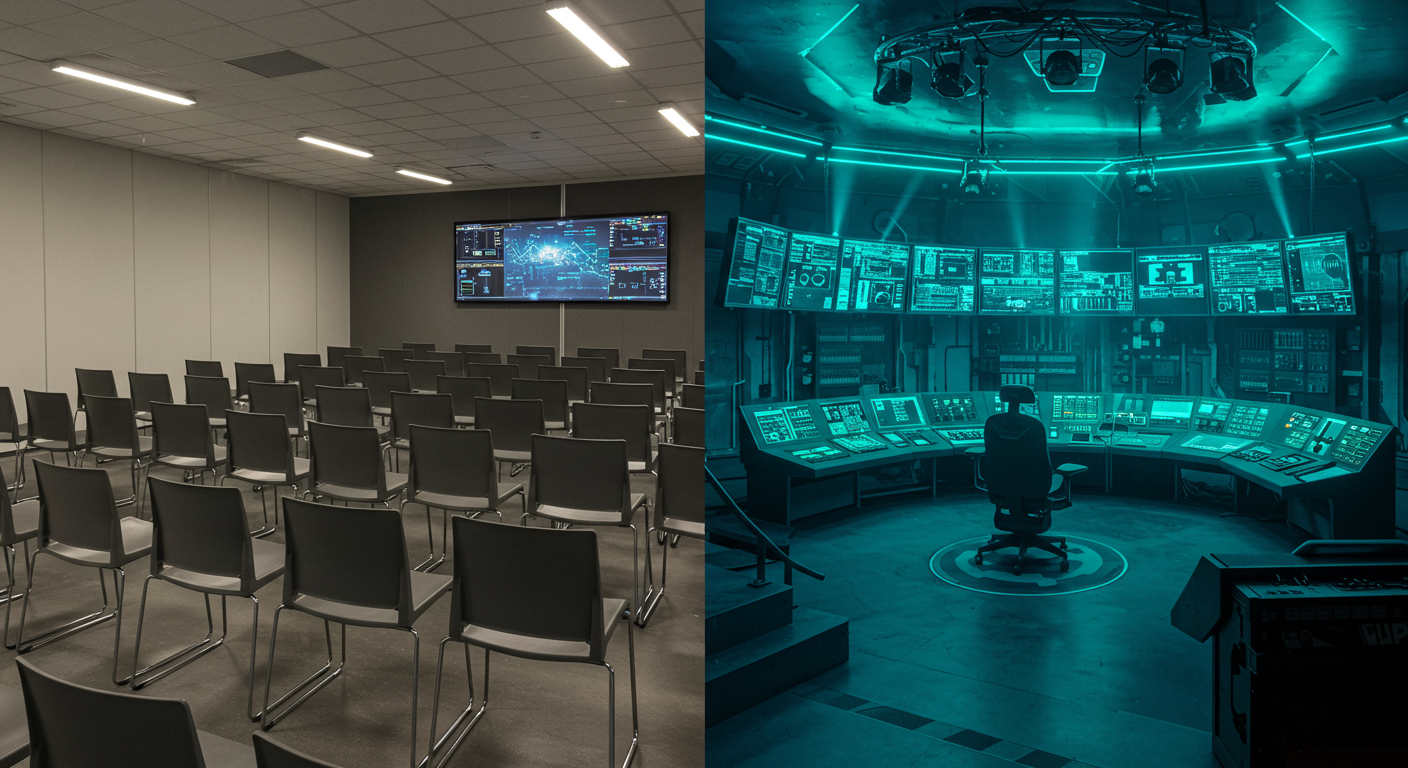Step into a corporate boardroom, and you’ll find a table for debate, chairs for comfort, a screen for presentations, windows for inspiration. Step into a control room, and you’ll find none of those things — because this is not a place for discussion. It’s a place for decision. Not for ideas. For action. Not for presentation. For perception.
The table is gone — replaced by consoles designed for rapid input, not relaxed conversation. The chairs are fixed in position — not for lounging, but for optimal reach and posture under pressure. The windows? Sealed or shaded — because natural light is beautiful, but glare is deadly. The decor? Minimalist — not for style, but to eliminate visual noise that competes with critical data.
Every inch of space is choreographed for one purpose: to reduce the time between observation and response. To eliminate friction between human intention and system execution. To make awareness instantaneous and action instinctive.
You won’t find a whiteboard here. You won’t need one. The “ideas” are already embedded in the interface — in the color-coded alerts, the trend-predicting graphs, the geospatial overlays that show not just where things are, but where they’re headed. Collaboration doesn’t happen through debate — it happens through shared situational awareness, real-time data streams, and role-specific interfaces that let each operator act within their lane without stepping on another’s.
Even the shape of the room is strategic. Curved walls to minimize blind spots. Centralized sightlines so supervisors can scan all stations at a glance. Acoustic panels to absorb the stress of concentrated silence. This is not architecture for aesthetics — it’s architecture for alertness.
The meeting room celebrates dialogue. The control room celebrates decisiveness. One is designed for exploration. The other, for execution. One invites you to lean back. The other demands you lean in.
And that’s the quiet revolution happening in modern operations: the realization that not all rooms are created equal — and that trying to manage critical systems in spaces designed for brainstorming is like performing surgery in a café. Possible? Maybe. Wise? Never.
So the next time you walk into a sleek, windowless room humming with quiet intensity, don’t mistake it for a lack of warmth. It’s not cold — it’s focused. It’s not sterile — it’s precise. It’s not impersonal — it’s deeply, profoundly human. Because every choice in that room was made not for the visitor’s comfort — but for the operator’s clarity.
And in that clarity, cities stay lit. Trains stay on time. Water keeps flowing. Not because of meetings — but because of moments. Moments captured, interpreted, and acted upon — in rooms that look nothing like where ideas are born… but everything like where they become reality.

